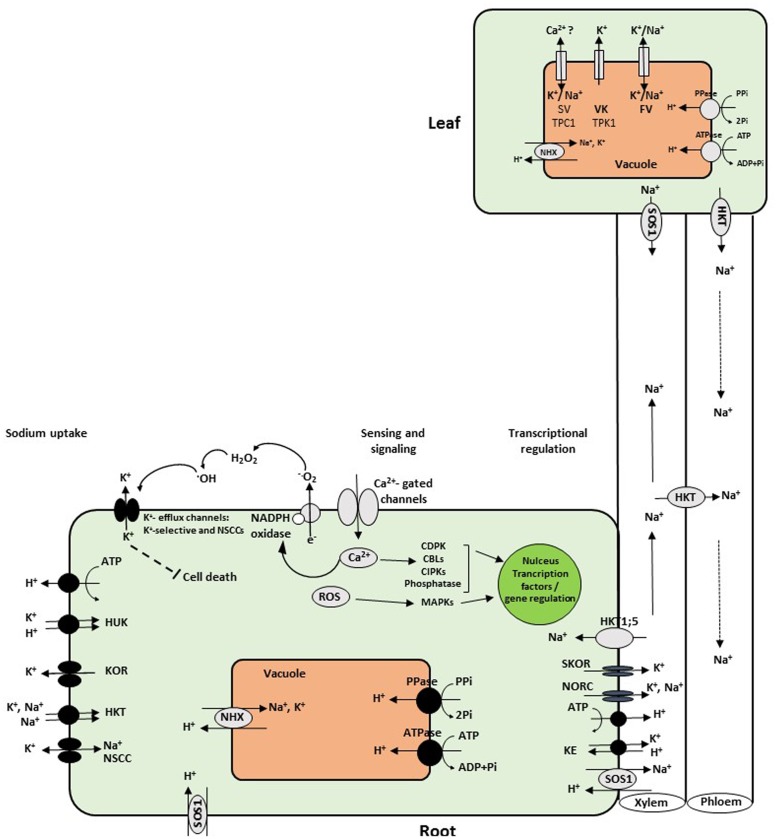FIGURE 1.
Schematic overview of sodium uptake into roots and transport mechanisms into leaves. Na+ enters root cells and cross the plasma membrane via NSCC, CNGC, members of the HKT gene subfamily 1, and apoplastic pathways. To cope with salt stress, Na+ is sensed by the hyperosmotic and ionic sensors leading to activated Ca2+, ROS, and hormone signaling pathways. CDPKs, CBLs, CIPKs, MAPK become active and transduce signal downstream gene transcription in the nucleus. This signaling pathways result in activation of detoxification mechanisms, including the plasma membrane Na+/H+ antiporter (SOS1), HKT, and the tonoplast Na+, K+/H+ exchanger (NHX). SOS1 extrudes Na+ from the cortex cells at the root–soil interface, while at the xylem parenchyma cells; it loads Na+ into xylem sap. The HKT1 protein mediates the reverse flux and unloads Na+ from the xylem vessels to prevent overaccumulation in photosynthetic tissues. Other candidates for loading Na+ to the xylem are the outward-rectifying K+ channels KORC and NORC. At the tonoplast membrane, NSCCs include the slow vacuolar (SV) and fast vacuolar (FV) conductances, whereas the vacuolar K+ (VK) channel is selective for K+, while TPC1 is perfectly leaky for Na+ (Maathuis and Amtmann, 1999; Shabala and Cuin, 2007; Kronzucker and Britto, 2011). To maintain low concentration of Na+ in leaves, it is either retranslocated with HKT gene through the phloem to lower leaves and down to the roots, or detoxified by sequestration into the vacuole with NHX proteins. NSCCs, nonselective cation channels; HUK, HKT, high potassium affinity transporter; ROS, reactive oxygen species; CDPKs, calcium-dependent protein kinases; CBLs, calcineurin B-like proteins; CIPKs, CBL-interacting protein kinases; MAPK, mitogen-activated protein kinase; KOR, outward-rectifying K+channels; NORC, nonselective outward-rectifying channels.

